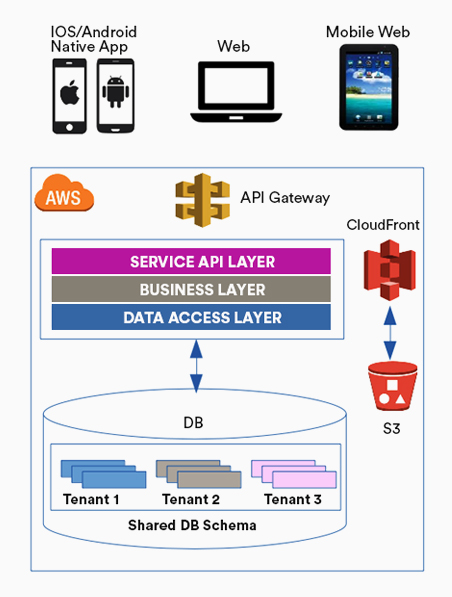An award-winning cloud-based Fleet Management system
Assetminder is a cloud-based fleet maintenance and workshop management system that was awarded the prestigious Innovation Award at the recent 2017 Fleet Transport awards in Dublin. It was built ground up into a comprehensive platform that helps fleet maintenance and workshop planning. The previous version of the Assetminder application, known as Fleetminder, was designed and developed as a client-server application.
The Challenge
Like most client-server applications, the company had faced many operational difficulties on a daily basis such as pushing patch updates individually, attending to different client requests on a regular basis, data inconsistencies and manual data transfers from other enterprise applications such as stock, vehicle information, etc.
Therefore, the challenges were threefold;
- Assetminder needed an application that was centralized, connected and robust
- Each enterprise needed an isolated environment
- Workshop operators wanted to use the application using their smart phones/ hand-held devices
HOW 1 BILLION TECH HELPED
In order to tackle the main operational challenges, 1 Billion Tech was able to leverage cloud development capabilities which improved scalability and ease of maintaining the system. This was built ground up around the customer’s requirement making it easier to plan and manage day to day fleet and workshop management activities.
Some of the main modules of the application include Incident management, event management, defect management and vendor management. Additionally, it has a comprehensive reporting module along with multi-currency and multi-language features giving it a wider geographic reach. Most of these configurations are dynamically customizable and easy to manage.
This cloud enabled (SaaS) enterprise application was also supported on both web and mobile. The native mobile applications provide real-time and off-line working modes enabling users to work with or without a data connection.
The Solution

Figure 1 : The Solution Architecture
The overall architecture (See Figure 1) has the following features.
-
Monolithic Back-End Design
The back-end is developed using Open Source Java Frameworks (Spring MVC, Hibernate, Axis2) with multi-tier design approach. -
Native Mobile Applications
Native mobile applications were developed (for iOS and Android) to provide the maximum usability with its asynchronous data synchronization feature. A lightweight database was used with native mobile application distributions to facilitate this task. -
Multi-tenancy
A separate DB schema was created for each enterprise. This enabled the data isolation for each enterprise. Native mobile applications were developed (for iOS and Android) to provide the maximum usability with its asynchronous data synchronization feature. A lightweight database was used with native mobile application distributions to facilitate this task. -
Availability
24x7 availability was enabled with cloud fault tolerant options provide by AWS (Using Elastic Load Balancers for both Application Servers and Databases). -
Scalability
The AWS auto scaling groups were used to scale out the databases depending on the load situation. -
Enterprise Integration
The back end consists of a “service layer” for any internal / external integrations. Services are exposed via AWS API Gateway. -
API Management
AWS API Gateway is used to publish Assetminder APIs to external parties. -
Object Storage
AWS S3 Object Store and AWS CloudFront is used to store relevant Assetminder objects for retrieval and caching.
BENEFITS TO CLIENT
1. Ease of Governance – Having a centralized design makes the governance much easier and saves a lot of
time.
2. Improved Time To Market (TTM) – It is mater of minutes since an enterprise can be created withing
a few minutes with the applications, multi-tenancy features.
3. Manageability, Re-usability – Adherence to Service Oriented Architecture (SOA) gives a more loosely
coupled environment and increase the service re-usability.
4. Added Security – Having deployed in a AWS Virtual Private Cloud (VPC) gives the required security
at the network level . Services are secured via API Gateway specific security features. API Gateway further
does throttling, specific user management, service filtering, relevant transformations and works as a
facade for many external systems.
5. Improved Scalability, Availability – With the AWS Auto scaling features, either application server
or Database instances can be scaled out with the load of the system and can scaled down with the less
load. This improves the system availability.
The Future Direction
Technically the solution architecture can be further refined with the advent of container architectures and micro-services design. This will further improve the system agility and scalability and will more-less comply with the latest technology trends such as container driven architectures and micro-services domain driven designs.
